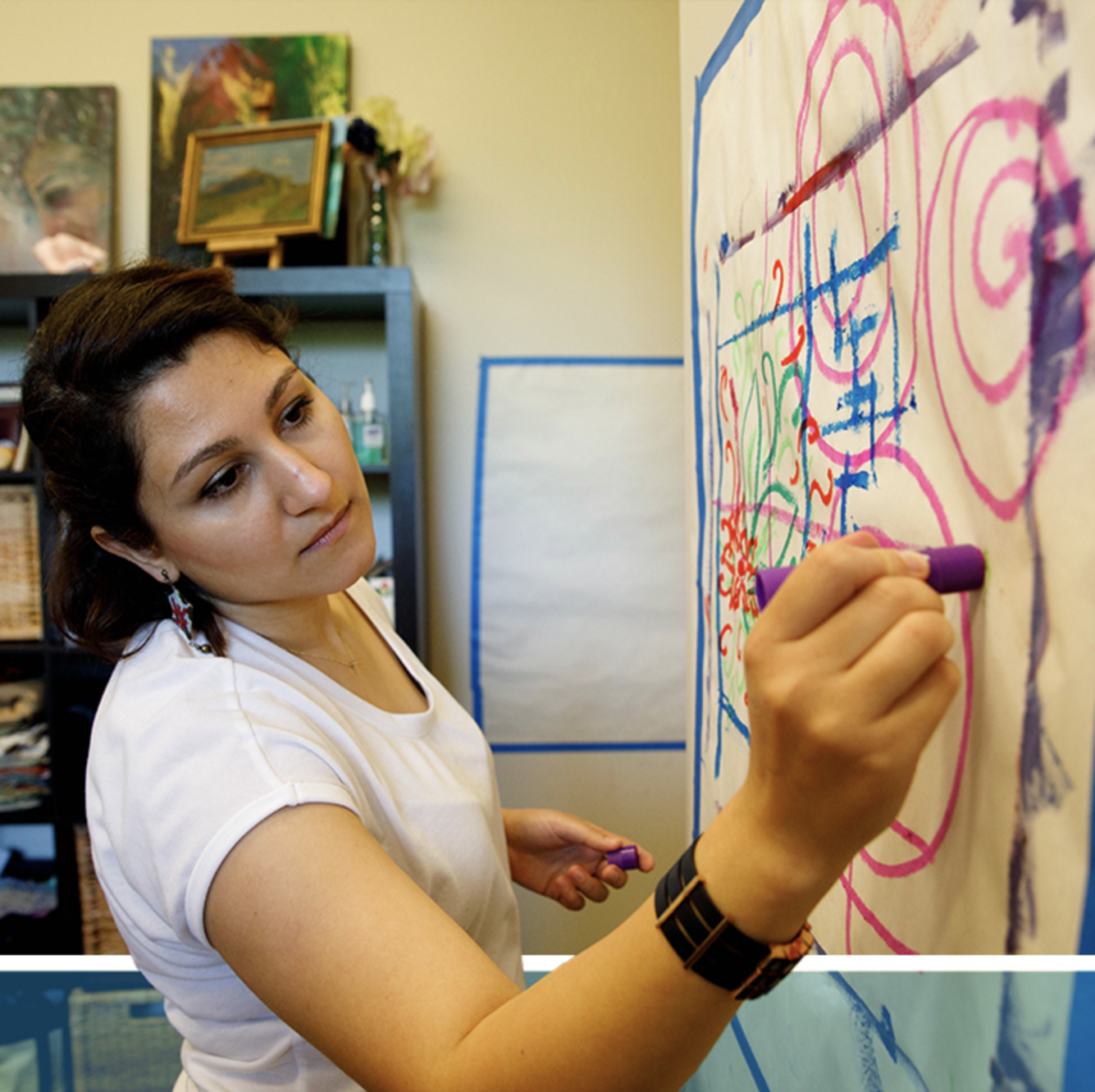What Is Art Therapy and How Can It Treat People with Addictions?
Experts describe addiction as a complex brain disorder and a relapsing disease. Since it impacts all aspects of a person’s life, treatment usually involves a variety of approaches. Detox, medication, behavioral therapy, and group counseling are traditionally used in drug and alcohol recovery.
Treatment specialists have expanded recovery programs to include alternative therapy. Art psychotherapy is a form of holistic therapy and is used as a recovery tool to help people struggling with various kinds of addictions.
What Is Art Therapy?
Also known as creative arts therapy or expressive arts therapy, art therapy can be an effective way to treat alcohol and drug addiction as well as co-occurring disorders such as anxiety and depression. It is an alternative and positive way to deal with negative emotions. Think of it as a way to heal by using art instead of words.
Art is a form of healing that has a long history, although it’s a newer approach to helping individuals create substance-free lives. For millennia, people have used art to tell stories and express their feelings. These expressions include cave paintings and graffiti. They are symbolic ways to communicate, send messages, and express emotions.
The principles are essentially the same when it comes to using art as a recovery tool in rehab. Rehab residents have an opportunity to unlock their artistic skills and use them to self-soothe when they feel the urge to use alcohol or drugs. They can sketch, draw, doodle, paint, and color to express their emotions or release guilt, anger, or shame. They can reach deep within and empower themselves, reshape their self-images, and harness positive thoughts and feelings about the world.
Types of Art Therapy
Creating an art journal, sculpting or painting emotions, stress painting, and traumatic event drawing are all examples of expressive arts. But there is more to art therapy than putting a pencil to paper or a paintbrush to canvas. The art therapist facilitating treatment may use expressive methods such as:
- Music therapy
- Dance therapy
- Drama therapy
- Visual art
Important focus points of art therapy include imagination, expression, and establishing a connection between the mind and body. Therapists may ask clients to respond by using pictures, sounds, movements, and experiences. The therapists carefully observe the colors, shapes, actions, tone of voice, and facial expressions their clients use to convey their feelings.
These serve as clues to the clients’ thoughts and belief systems and help therapists learn what triggers their clients’ addictive behaviors. The therapists later explain their findings to their clients to help them understand why they turn to addictive substances and activities to cope.
Art Therapy vs. Traditional Therapies
Many people struggling to kick addiction are also burdened with depression, anxiety, post-traumatic stress disorder (PTSD), or some other co-occurring disorder. As such, treatment needs to help them address both the substance abuse problem and the underlying mental health issue.
Cognitive and dialectical behavioral therapies provide important tools to help change thoughts, feelings, and behaviors that encourage addiction. Clients learn positive coping skills to manage cravings and other types of substance use triggers.
While these traditional techniques play a key role in recovery, treatment specialists agree that art-based treatment can have a profound impact on psychological healing from substance abuse. It provides an opportunity for healthy self-reflection, self-awareness, and self-acceptance in a nonverbal way it helps people deal with their cravings.
How Art-Based Therapy Can Help You Become Sober
Immersing yourself in various forms of art can enhance your emotional well-being and communication skills. It evokes authenticity, unlocks pent-up emotions, reduces stress, helps you resolve conflicts better, increases positive emotions, and builds self-esteem. If you’re not careful, you may feel as if you’re developing a new type of addiction — an addiction to the joys of artistic healing.
Above all, art therapy at an inpatient or outpatient alcohol and drug rehab centers can help promote long-term sobriety. Other programs and therapies that may be beneficial include:
- Medical-assisted treatment (MAT)
- 12-step and non 12-step programs
- Yoga and meditation
- Experiential therapy
- Trauma therapy
- Family therapy
- Individual and group counseling
Keep in mind that the use of therapy is not limited to drug and alcohol abuse treatment. In fact, it may also be beneficial for gambling, gaming, sex, pornography, and other types of addictive behaviors.
Finding an Arts Therapy Program for Addiction
Dedicated medical and mental health professionals at local addiction treatment centers can provide structured and supportive environments to beat addiction. They can help you determine which treatment programs suit you and may recommend expressive therapy.
Art therapy is a powerful way to write, draw, paint, dance, or sing your way to recovery. While it can be an effective stand-alone therapy, experts say it may also be useful as part of an extensive treatment program that includes medication and behavioral therapies.
Author Bio: Patrick Bailey is a professional writer mainly in the fields of mental health, addiction, and living in recovery. He attempts to stay on top of the latest news in the addiction and the mental health world and enjoy writing about these topics to break the stigma associated with them.
Sources
ncbi.nlm.nih.gov – The Use of Art and Music Therapy in Substance Abuse Treatment Programs
ncbi.nlm.nih.gov – Evidence-Based Practices for Substance Use Disorder
kundoc.com – The First Steps Series: Art Therapy for Early Substance Abuse Treatment
Experts describe addiction as a complex brain




